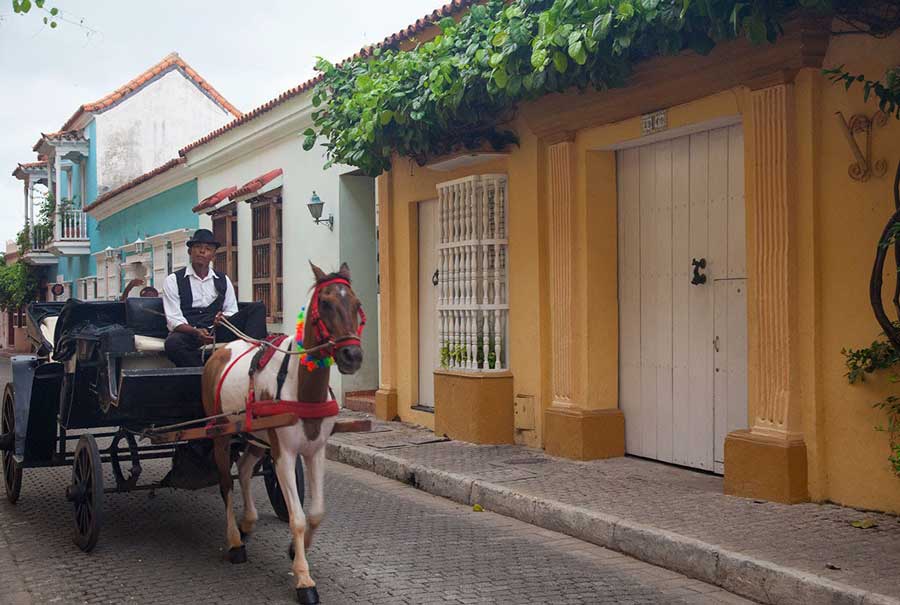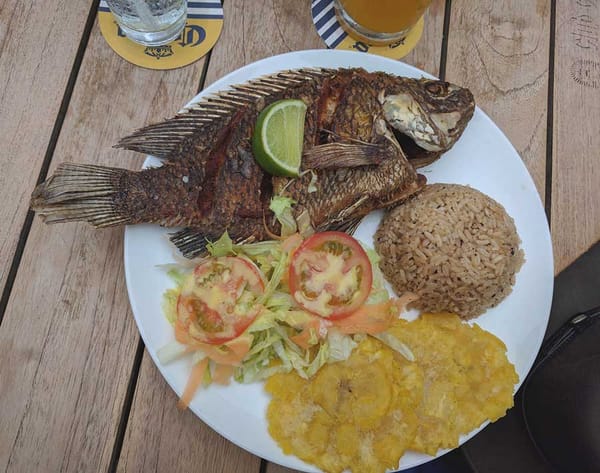In recent years, Colombia is steadily turning into a popular tourist destination. For those who are just discovering this South American country, the most frequently asked questions are: is it worth visiting? If so, where to go and for how long?
The most often visited cities in Colombia are Bogota, Medellín and Cartagena. Of those three only Cartagena is situated on the seaside.
In this post I will share and summarize my experience of visiting Cartagena in July 2018.
What to know before you go:
Weather
Cartagena is a coastal Caribbean city, so the weather in the summer there is very predictable: hot and humid. If you've been in Mexico or Hawaii, you'll know what I mean. It took us a day or two to adjust to the humidity and we did just fine.
Lodging
In Cartagena, there are three distinguished areas to stay: The Historic Walled City, Getsemani and Bocagrande.
The first two are next to each other, and staying there you'll be right in the heart of the old city with its nightlife, restaurants, street performances, shops, etc.
Getsemani is aimed more for younger travelers and offers a variety of hostels, night clubs, and bars. The Old City is good for everyone, with the one hindrance being that you will need to get a ride to the beach: there are no beaches within close walking distance from the Old City.
Bocagrande is a long and narrow peninsula lined with beachfront hotels. So if sunbathing and swimming are your things, you may want to choose to stay in a modern seaside hotel and ride a taxi to the old town for its attractions.
We wanted to have a more authentic experience, so we stayed in a rented apartment in the old town (walled city).
What to pay attention to:
Because we knew in advance what weather to expect, we rented an apartment with air conditioning. What we did not realize, however, was that when the listing shows "air conditioner" it doesn't mean that the unit would be equipped with a central AC. You will have a wall mounted AC either in a bedroom or in the living room. We were lucky to have a bedroom air conditioner: this way we were able to get good, restful sleep. An AC in the living room would be quite useless for that purpose.
Moreover, in the old buildings in Cartagena it is very common to not have glass in the living room windows, but rather only wooden shades. That's what we had, and thankfully, there were no mosquitos!

In the walled city of Cartagena, the sewage system is old and not very well maintained, so when it's raining, sometimes the water shuts off. Not for a long enough time to create a big problem, but it is wise to buy some drinking water and have a day’s supply just in case. We did not know that, so one evening we were caught by surprise and had to run to the nearest store for water. Of course, it happened late at night and not all the stores were open. This little adventure did not bother us, though -we had a fun time with it, collecting rainwater in pots for washing our hands!
More about Cartagena: "City of flowers"
Hygiene and health
When we travel anywhere, we always bring a good supply of activated charcoal and hand sanitizer. Street food in Cartagena is very tasty and inexpensive, and we enjoyed it a lot. We just topped it off every time with a couple of capsules of activated charcoal, and never had a problem.
Beaches
As mentioned above, there is no access to a beach in the old town. So when we felt like swimming, we had a 10-minute taxi ride to Bocagrande. Taxis in Cartagena are very affordable and easy to find. Basically, we would step out of our apartment building, look left and right and spot one or two. They all have a fixed price per mile, set up by the city. It makes things very easy and eliminates the need for bargaining.

Bocagrande is a long peninsula on the outskirts of Cartagena, lined with a nice sandy beach. We found the beach not to be too crowded, and the water was clean, which is good, but in places it is definitely lacking some amenities we'd like to see, such as changing cabins and cafés.
City life
Another thing worth mentioning about the town is that an enormous amount of street vendors are always trying to sell souvenirs to tourists. Plus, every restaurant always has one or two callers outside the door who will shove a menu in your hands and offer seating inside. At first it was quite annoying, but we got used to it, and found that a polite, but firm, "no, gracias" always does the trick.
For more information on what to see and do in Cartagena, read "Cartagena: Essential Guide".
Food
Colombian cuisine is simple: a very typical dish would consist of fish or chicken with fried rice and fried plantains. Seafood is fresh and very tasty, we loved it. Also, there are Peruvian and Argentinian restaurants which are worth visiting. After about 7 pm street food vendors park their carts along the streets and start cooking arepas and other authentic food which costs very little and tastes heavenly!
For more tips on what food to try in Cartagena, read "Cartagena: Foodie Guide".
Rosario islands national park
During our week-long stay in Cartagena we took a day trip to the Rosario islands. This is definitely a must-do! If we had more time, we would definitely stay there a couple of nights. Well, maybe next time... The Rosario islands are a postcard-ready Caribbean beach paradise a 45 minutes boat ride away from Cartagena. It is an archipelago of 27 picturesque islands, from tiny ones with space only for one kayak landing, to those large enough to host a resort.

Before traveling to Cartagena we searched online for day trips to islands and found only two options to get there, both quite expensive. But upon arrival to Cartagena, we found that in the city there are a whole lot more travel agencies offering day trips to the Rosario islands, they just aren’t very well represented on the Internet. So we chose the option we liked and had a wonderful day of swimming, snorkeling, kayaking and sunbathing. And lunch was included, too.
Again, it wasn't without a little adventure. When we bought the tour, we were told that a driver will pick us up early in the morning and bring us to the harbor for departure. We said that we'd rather walk to the harbor: because we read that in Colombia people tend to be late for everything and we wanted to board on time. But for some reason the tour agent insisted that they pick us up and deliver us to the right departure pier. So on the following morning we were ready and waiting outside at 7:30 am. We weren't even surprised when no one came for us. After waiting some 20 minutes we called the agency. They said the car was sent. After another 10 minutes they called us saying that the driver is waiting. But we did not see any cars... It turned out that the driver was waiting outside of a hotel that had the same or a similar name to our apartment building, and it was on the other side of the city. Finally, we were picked up and got to the harbor; of course our boat had sailed without us by that time. But it seemed that such things happen quite often in Cartagena, so they had us board the next one without any problems.
Tip: if you learn at least a few essential phrases in Spanish, it will make your life in Cartagena so much easier! You'll get about with English and gestures most of the times, except when it doesn't work! For example on our boat trip to Rosario Islands we had only Spanish-speaking guide, and no wonder why: all other 36 passengers were from South America. Of course you can hire English speaking guide, but there are much less options for a higher price.
For more tips on quick language learning read Travel communications
So in my opinion, one week in Cartagena allows to enjoy it without rush: spend some time on the beach, have a nice walks through the old town, visit a fortified castle, get some nice hand-woven mochilla bag, drink Colombian coffee, eat arepas right off the skillet, dance salsa in nightclub and make a wish while watching a beautiful sunset from centuries old city wall.









